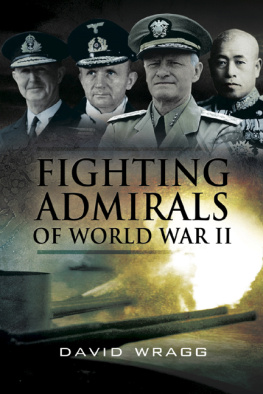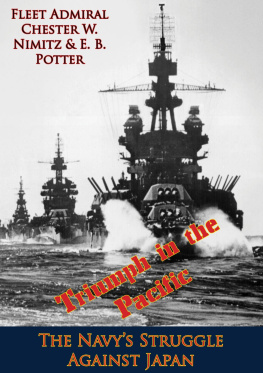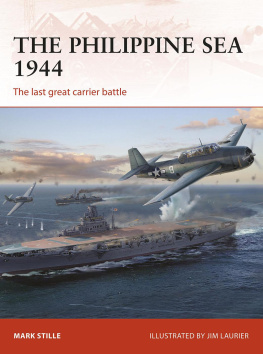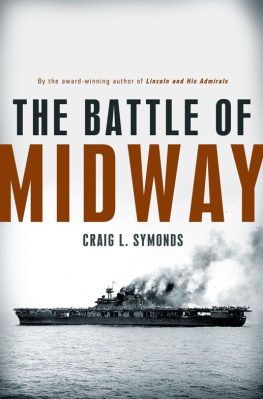The Quiet Warrior
The Quiet Warrior
A BIOGRAPHY OF
ADMIRAL RAYMOND A. SPRUANCE
By THOMAS B. BUELL
With an introduction and notes by
John B. Lundstrom
NAVAL INSTITUTE PRESS
Annapolis, Maryland
The latest edition of this work has been brought to publication with the generous assistance of The United States Naval Academy Class of 1945.
Naval Institute Press
291 Wood Road
Annapolis, MD 21402
This book was originally published in 1974 by Little, Brown and Company, Boston, Massachusetts.
1987 by the United States Naval Institute
All rights reserved. No part of this book may be reproduced or utilized in any form or by any means, electronic or mechanical, including photocopying and recording, or by any information storage and retrieval system, without permission in writing from the publisher.
First Naval Institute Press paperback edition published 2009.
The photographs in this book, unless otherwise stated, are from the Naval Historical Collection, Naval War College, Newport, Rhode Island.
The author is grateful to the following for permission to quote previously published material:
The United States Naval Institute for the article Admiral R.N., 1776, by A. W. Moffat, published in the U.S. Naval Institute Proceedings, February, 1972. Copyright 1972 by the U.S. Naval Institute.
Rear Admiral Samuel Eliot Morison for the following quotations from History of United States Naval Operations in World War II: Volume VII, pp. 119120, description of passage to Tarawa. Copyright 1960 by Samuel Eliot Morison; and from The Two-Ocean War: , assessment of Spruance. Copyright 1963 by Samuel Eliot Morison.
Vice Admiral Morton L. Deyo, USN (Ret.), for his letter to Admiral Morison quoted in The Two-Ocean War, pp. 1112.
W. W. Norton & Company, Inc. for the letter from Secretary of the Navy Claude Swanson to Eleanor Roosevelt, quoted on of Eleanor and Franklin by Joseph P. Lash. Copyright 1971 by Joseph P. Lash.
The Viking Press Inc. for the paragraph on statesmanship on of Studies in War and Peace by Michael Howard. Copyright 1969 by Michael Howard.
ISBN 978-1-61251-211-2 (eBook)
The Library of Congress has cataloged the hardcover edition as follows:
Buell, Thomas B.
The quiet warrior.
(Classics of naval literature)
Bibliography: p.
Includes index.
1. Spruance, Raymond Ames, 18861969. 2. AdmiralsUnited StatesBiography. 3. United States. NavyBiography. 4. World War, 19391945Naval operations, American. 5. World War, 19391945CampaignsPacific Ocean. I. Title. II. Series.
V63.S68B8 1987 940.5450924 [B] 87-15177
 Print editions meet the requirements of ANSI/NISO z39.48-1992 (Permanence of Paper).
Print editions meet the requirements of ANSI/NISO z39.48-1992 (Permanence of Paper).
9 8 7 6 5 4 3 2
CONTENTS
W HAT are the essential features that combine to create a truly effective biography? Certainly it is easy to detect their absence. Some purported biographers merely recite in broad fashion the primary events surrounding the life of their subject and sprinkle a few entertaining anecdotes into the narrative. They offer no deep insights into the individuals personality or his way of thinking. In creating the setting in which their hero or villain lived, worked, prospered, or declined, they are apt to become so engrossed with collateral events and stage setting that they lose sight of their subject.
The principal goal of a biography is to help the reader understand what a person was actually like, how he viewed life and how he reacted to the challenges that it posed. Thus, it is not only vital to have a grasp of what he did, but also to know why he did it. Only in that way is it possible to measure the man, to assess his strengths and weaknesses, and, most important, to gauge his impact upon events and his fellow men.
At first glance, Admiral Raymond Ames Spruance would seem an ideal subject for a naval biography, particularly a superficial one. All the major events of his naval career took place at such a lofty level that the whole Pacific Fleet, even many civilians at home, knew in a general way what he did in World War II. Hundreds of documents and many books describe what the forces under his command were able to accomplish.
What was Spruances role in the victory over Japan? First of all, he emerged as the key leader in the most famous carrier action of history, the Battle of Midway in June 1942. Then, after a years tour of duty as chief of staff to Admiral Chester W. Nimitz, commander in chief of the Pacific Fleet (CINCPAC), Spruance was given the Fifth Fleet. This became the principal Pacific Fleet amphibious command, charged with conducting the invasions of the Gilberts, the Marshalls, the Marianas, Iwo Jima, and the climactic assault on Okinawa. Spruance directed the vital thrust through the Central Pacific towards the Japanese home islands. Along with Nimitz and Admiral William F. Halsey, he stood in the first rank of naval leaders in the Pacific war.
As an individual, however, Spruance presents extraordinary problems for a biographer. He was a very private person, unemotional and undemonstrative in public. To a great degree he was unconcerned about his image, caring little for glory in the conventional sense. His gods were logic and reason. The character of Mr. Spock in the popular science-fiction series Star Trek could easily have been patterned after Spruance. The admiral competed not with others but with his own impossibly high self-expectations, and that is the way he judged his successes and failures. A man who relied on deeds rather than words to make his mark, Spruance seemed oblivious to what posterity would think of him. He did not like to speak publicly, nor did he do much writing if he could avoid it. He authored no wordy, self-justifying memoirs. His achievements, intellect, and integrity were responsible for the great respect accorded him by his peers.
For a number of reasons, Thomas B. Buells The Quiet Warrior is able to surmount these difficulties and get to the heart of the man. As a naval officer Buell shared many of the same experiences, albeit two generations later, that shaped the young Spruance. Like Spruance, he attended the U.S. Naval Academy, learned the ropes at sea and ashore, gradually accepting more responsibilities. Both men knew the joys and perils of commanding destroyers. Finally, both profited from a close association with the U.S. Naval War College. The similarities in their backgrounds gave Buell an insight into the challenges Spruance faced in his earlier career and how he applied the lessons he learned to his commands during the war years.
Buell had the great good fortune of meeting the man whose biography he would write. Also, he had access to Spruances letters to some of his close associates and to other historians. However, because Spruance did not often record what he thought or felt, it became vital that Buell assess the man by determining his impact upon others, particularly those who were near to himhis family and his staff. Mrs. Margaret Dean Spruance, the admirals wife, and Margaret Spruance Bogart, his daughter, offered Buell an intimate look at the private Spruance through the eyes of those closest to him. Equally important was the testimony of several officers who served on his staff. Two especially valuable witnesses were his longtime friend and chief of staff, Rear Admiral Charles J. (Carl) Moore, and his flag lieutenant, Captain Robert J. Oliver. The outcome of Buells research and insight is a masterpiece of American biography, a work whose evocation of its elusive subject can be favorably compared to Rear Admiral Samuel Eliot Morisons classic








 Print editions meet the requirements of ANSI/NISO z39.48-1992 (Permanence of Paper).
Print editions meet the requirements of ANSI/NISO z39.48-1992 (Permanence of Paper).